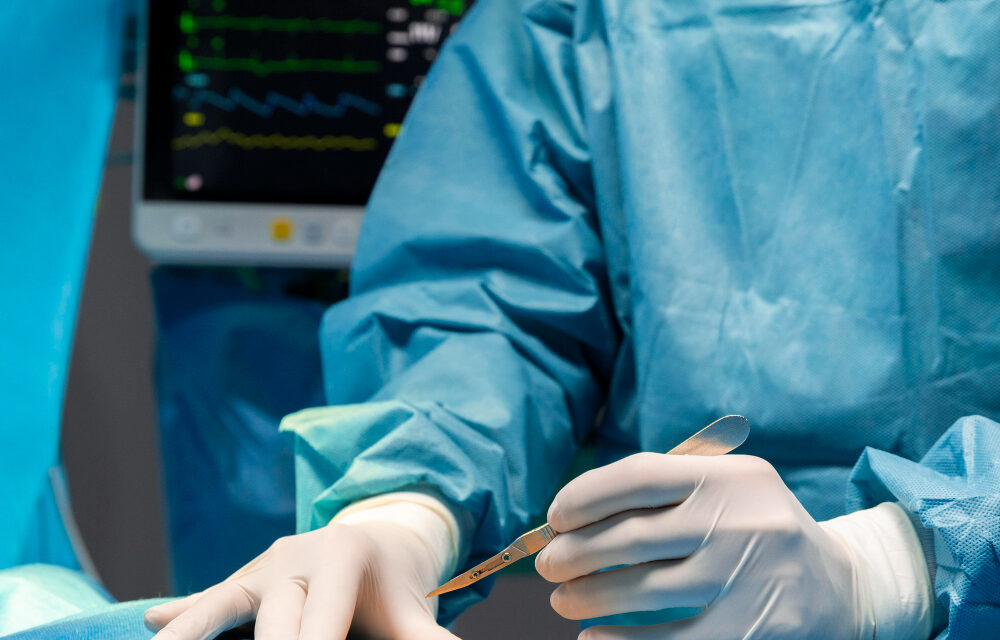Lumbar Laminectomy Physical Therapy Protocol
Before discussing Lumbar laminectomy physical therapy protocol, it is necessary to understand what Laminectomy is. It is commonly known as decompression surgery, which is a type of spine surgery that involves removing a specific part of the vertebral bone called the lamina. It is usually performed to eliminate the pressure on the spinal cord or nerves from spinal stenosis or a herniated disc.
Physical therapy is vital in this type of surgery as it helps regain mobility, strength, and function of the spine and surrounding muscles. This guide will cover everything you need about the laminectomy physical therapy protocol.
Pre-Surgery Preparation
Before the surgery, the doctor may recommend certain exercises or stretches to prepare your body for the surgical procedure. Typical exercises prescribed before Laminectomy work on your strength and flexibility, which can be advantageous in recovery. The physical therapist will work with you to enable a personalized pre-surgery exercise program. The following are some of the exercises commonly recommended before the surgery:
Ankle pumps: move your feet up and down as if pressing on a gas pedal to increase blood flow and prevent blood clots. Each repetition is worth one move when moving both feet in opposite directions; the moves are counted as both feet moved once up and once down.
Knee-to-chest: lying on your back with knees bent, glide one leg towards your chest as the other remains bent. Both legs should be held for about 10-15 seconds maximum.
Pelvic tilts: lie on your back, bend your knees, and let your feet firmly rest on the floor. Gently roll your pelvis forward and return it to the original position.
Leg slide or heel-slide: lie on your back with your legs straight and firm on the surface. Gently slide one leg on the other downwards.
Upper back stretch: Stand with your cross-firm with your hands, slowly dislocate your upper body up to 45% ell with your legs fixed. Repeat the same for the other side.
Do not be tempted to embark upon any pre-surgical exercises without the advice of your physical therapist. Recommendations may change depending on your degree of difficulty or overall fitness.
What are the laminectomy rehab protocols?

After the surgery, following a structured physical therapy protocol is crucial to recover mobility and function in the affected area. The timetable for when to start physiotherapy may vary depending on your health and how much surgery was done. As a rule, most patients usually begin physical therapy within a few days after the operation.
Phase Intervals
Phase 1: Immediate Post-Operative Phase (Weeks 0-2)
Immediate Post-Operative Phase is mostly concerned with Pain Management, Wound Care, and Gentle Movements to prevent stiffness. But it is time to start moving and strengthening your legs, hips, back, and abdomen muscles. Depending on your level of mobility, your physical therapist may help you walk using a walker or cane.
Exercises in this stage may include:
Exercises in this stage may include moves that involve gentle activity of the affected body part within a pain-free range of motion. This helps to prevent muscle atrophy and maintain joint flexibility.
Core Strengthening:
Strong core muscles can help support your back and improve general stability. Many Physical Therapists will teach you simple but effective abdominal strengthening exercises like pelvic tilts or bridges.
Use an ice pack and a heating pad to help control the pain and reduce any swelling.
Early Recovery Phase (2-6 weeks)
Objectives: Introduction of low-impact exercises to start strengthening
Activities: Walking, pelvic tilts, and gentle stretching. A walking aid like a cane or walker will help maintain stability.
Intermediate Phase (6-12 weeks)
Objectives: Strengthening core/back muscles, improving flexibility
Activities: Bridging, leg raises, cat-cow stretch. A yoga mat is good for these exercises.
Advanced Phase (3 months and beyond)
Objectives: Intensive strengthening and functional training
Activities: More challenging exercises, aerobic conditioning, and functional movements. Buy a resistance band set to help with these exercises.
If you join a rehab program after your Laminectomy, some specific exercises and techniques may be:
Lumbar Stabilization:
You can strengthen the muscles that support your lumbar spine, improve posture, and avoid future injuries with a series of exercises for your lower back.
Cardiovascular Exercises:
Walking, cycling on a stationary bike, or swimming will increase strength and benefit the cardiovascular system overall.
Manual Therapy:
This treatment involves body manipulation to reduce pain and stiffness by working out the kinks.
Electrical Stimulation:
In this therapy, small electrical charges and muscle contractions are stimulated electrically to help heal troubled areas.
What is the fastest way to recover from back surgery?
• Pay attention to the physical therapy program.
• Do not lift heavy items or exercise heavily until the doctor approves.
• Sit up straight and make sure your posture is good, particularly when sitting for any length of time.
• If pain or tiredness comes on while working exercises, take a break and rest.
How important is physical therapy after back surgery?
Physical therapy is necessary for a successful recovery from back surgery. It helps to restore mobility, strength, and function to the spine and surrounding muscles and decreases the likelihood of complications arising during recovery. Over the long term, this facilitates healing itself.
Customized Exercise Plans:
Physical therapy involves designing exercise routines that meet your requirements and goals. Your physical therapist will consider your age, overall health, and the nature of your surgery to devise a safe, effective exercise program.
Monitoring Progress and Adjustments:
Your physical therapist will monitor your progress throughout the rehabilitation process and make necessary adjustments. This might involve increasing or decreasing the intensity of exercises, introducing new ones, or changing techniques to suit you better.
Adjusting Protocol as Needed:
Each individual’s recovery from back surgery can vary. Your physical therapist may need to change your exercise program as you progress and address any setbacks or setbacks in your recovery.
Maintaining Long-Term Benefits:
Physical therapy after back surgery helps with immediate post-surgery recovery and provides long-term benefits such as improved posture and reduced risk of future injuries.
Education and Support:
Your physical therapist will guide you through exercises and about proper body mechanics, posture, and techniques to avoid future injuries. They will also provide support and motivation throughout the recovery process.
Conclusion
Lumbar Laminectomy contributory surgery is an effective way to reduce pain and improve the quality of life for people with spinal conditions. However, it is vital to follow the Lumbar Laminectomy Physical Therapy Protocol to have a successful recovery after this operation. Compliance with this protocol, as well as appropriate pre-surgery preparation, will greatly hasten your rehabilitation.
By working closely with your healthcare team and following the principles in this guide, you can regain movement and use of the affected area without any long-term impairments. Always consult your doctor or physical therapist before you begin any new exercises or activities after surgery. With patience, devotion, and observance of the Lumbar Laminectomy Physical Therapy Protocol, you can return to a life without pain after laminectomy surgery. Therefore, keep calm and trust your physical therapist! Keep getting better!

